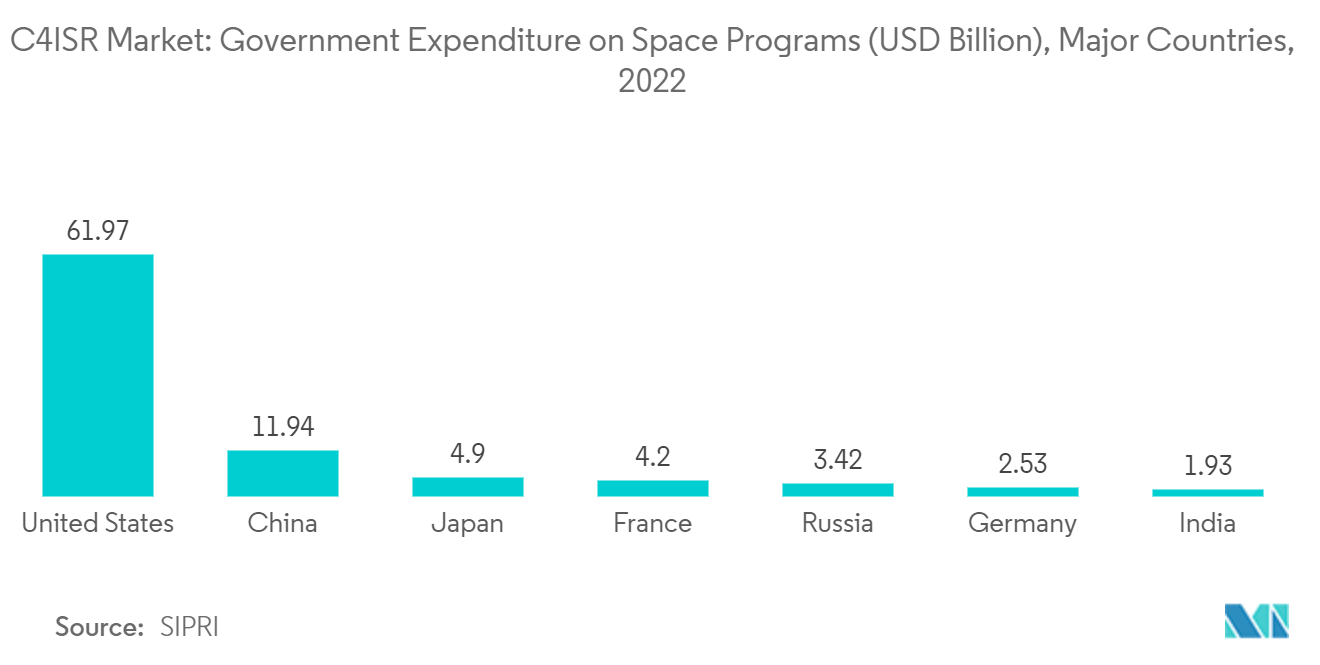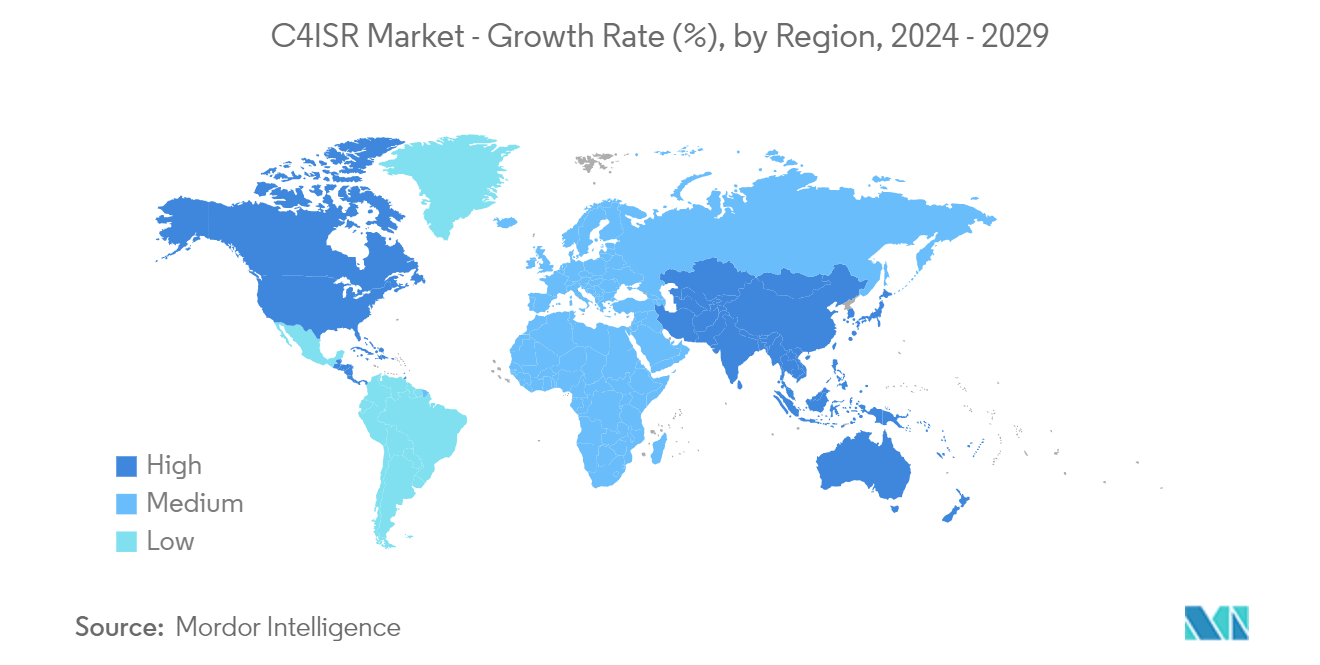Market Trends of C4ISR Industry
Space Segment Will Witness Highest Growth During the Forecast Period
C4ISR technologies in space encompass advanced satellite systems, remote sensing, and data analytics. These enable precise and timely intelligence gathering, strategic surveillance, and reconnaissance, which is crucial for informed decision-making in national security. The changing face of warfare, moving toward hybrid scenarios, will be underpinned by joint operations and will require interoperability to allow effective operation.
Though military satellites and surveillance drones have been used for decades now, the advent of pseudo-high-altitude satellites (HAPS) has bridged the gap between drones and satellites in terms of coverage and cost. HAPS incorporates the best aspects of terrestrial and satellite-based communication systems. They eliminate the capacity and performance limitations of satellites by efficiently delivering voice, video, and broadband services at much more economical pricing vs. performance margins than conventional geostationary satellites.
For instance, in November 2023, Northrop Grumman Corporation completed Thermal Vacuum tests on the Arctic Satellite Broadband Mission (ASBM), a two-satellite constellation designed to deliver broadband communications to the Northern polar region for the US Space Force and Space Norway. Similarly, in February 2023, The National Geospatial-Intelligence Agency awarded Maxar Technologies a five-year contract worth USD 192 million to provide commercial satellite imagery to US allies. Maxar will also provide three-dimensional data services to the allies. Such developments are expected to augment the prospects of the Space-based C4ISR segment during the forecast period.

North America is expected to witness highest growth during the forecast period
The North American region currently dominates the market and is expected to continue its domination during the forecast period. This is mainly due to the procurement of various land, air, sea, and space ISR systems by the US and Canadian governments. For FY 2023, the US Pentagon allocated USD 12.7 billion for command, control, communications, computers, and intelligence systems. The US armed forces are modernizing their special mission aircraft fleet, Electronic Warfare aircraft (EC-37B), Battlefield Airborne Communications Node aircraft (E-11A), and Maritime Patrol Aircraft (P-8A) on order. Between 2022 and 2029, a total of 12 P-8A and 5 E-11A are expected to be delivered. Such investments in the development of advanced communication and situational awareness systems are expected to accelerate the growth of the market studied.
Furthermore, in March 2022, the Canadian Department of National Defense selected Elbit Systems UK to provide a TORCH-X-based solution as part of the Airspace Coordination Centre Modernization (ASCCM) Project. Under the project, Elbit Systems UK will likely supply a joint-air version of its TORCH-X-based Battle Management Application (BMA) that will provide situational awareness by constantly displaying a local or recognized air picture, thus enabling effective coordination of air assets into complex land and joint battlespace. The system will be operated utilizing Elbit Systems’ E-CIXTM open architecture framework that will enable connectivity to the Canadian Armed Forces’ legacy applications and tactical datalinks while allowing future integration of new applications in support of the Canadian Armed Forces digital transformation plan. Thus, the growing focus on enhancing defense capabilities and the rising adoption of advanced C4ISR systems drive the growth of the market across the region.


